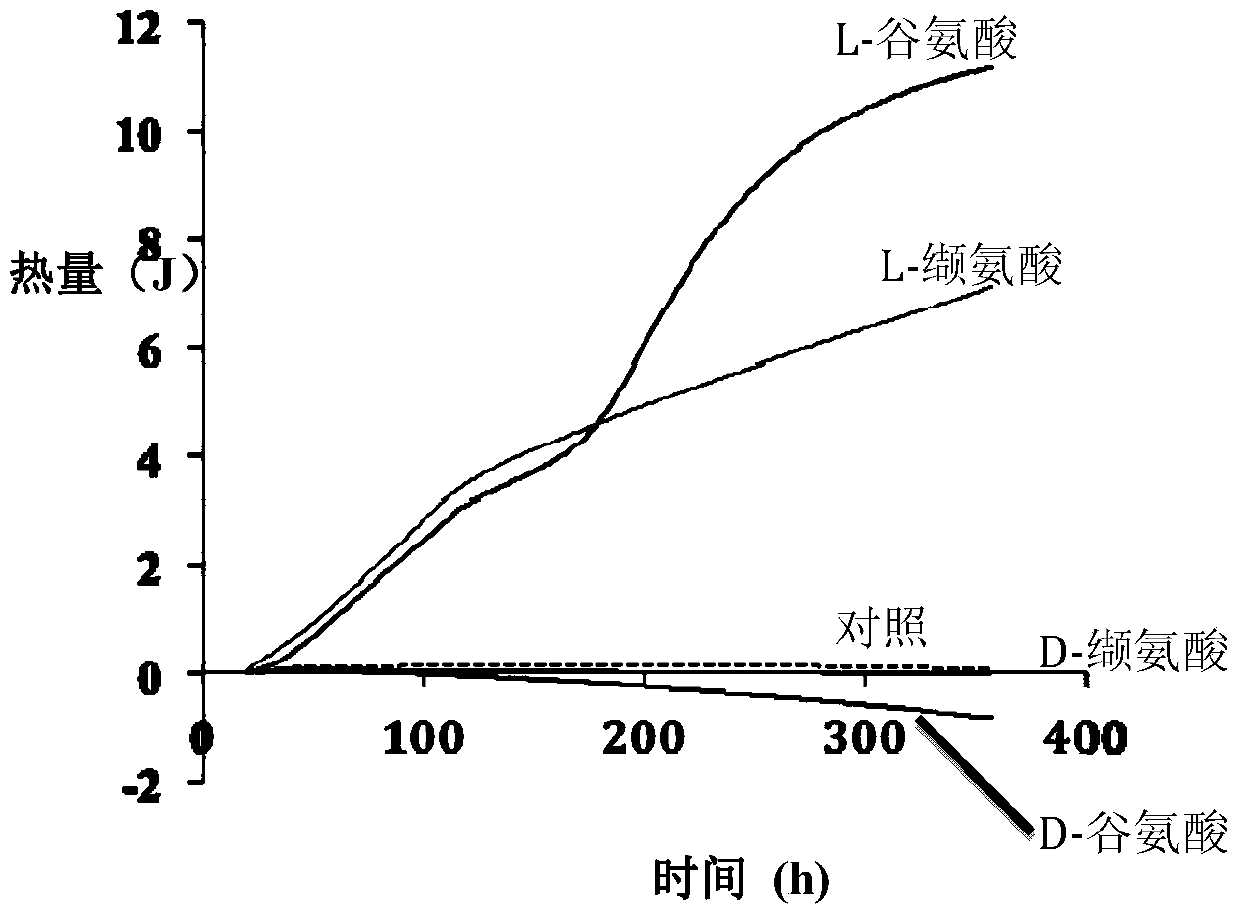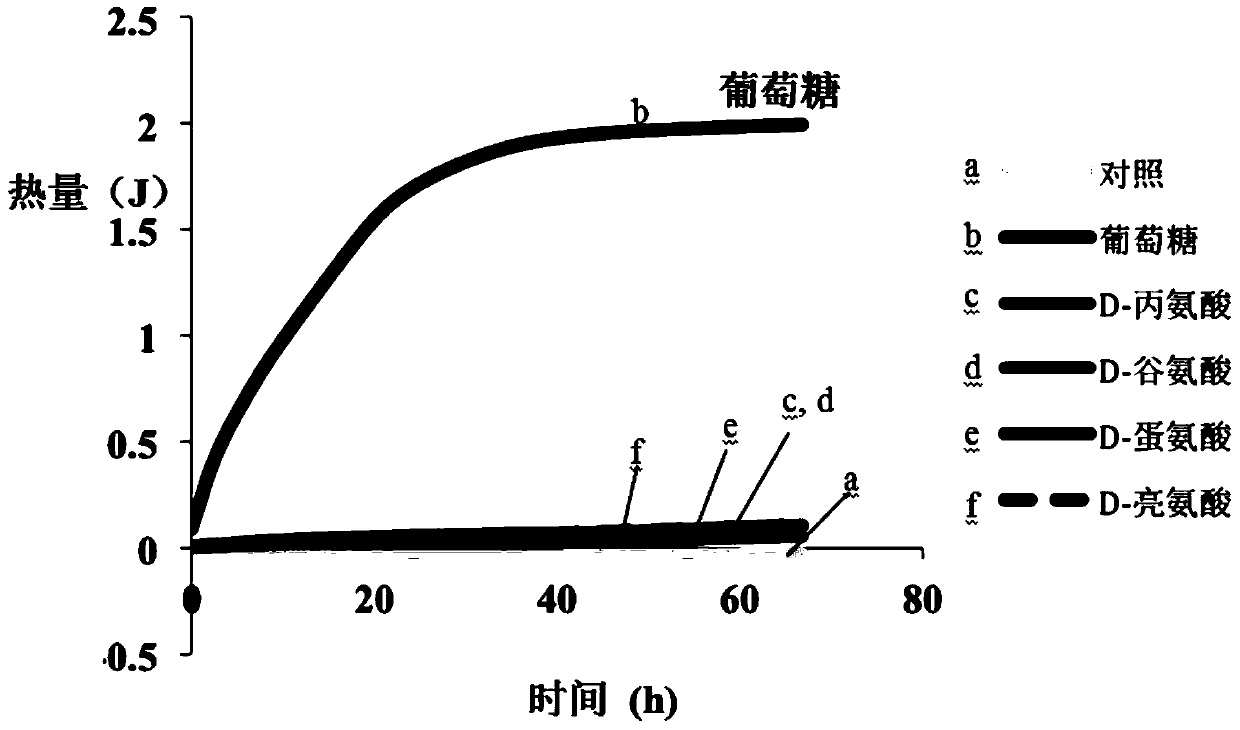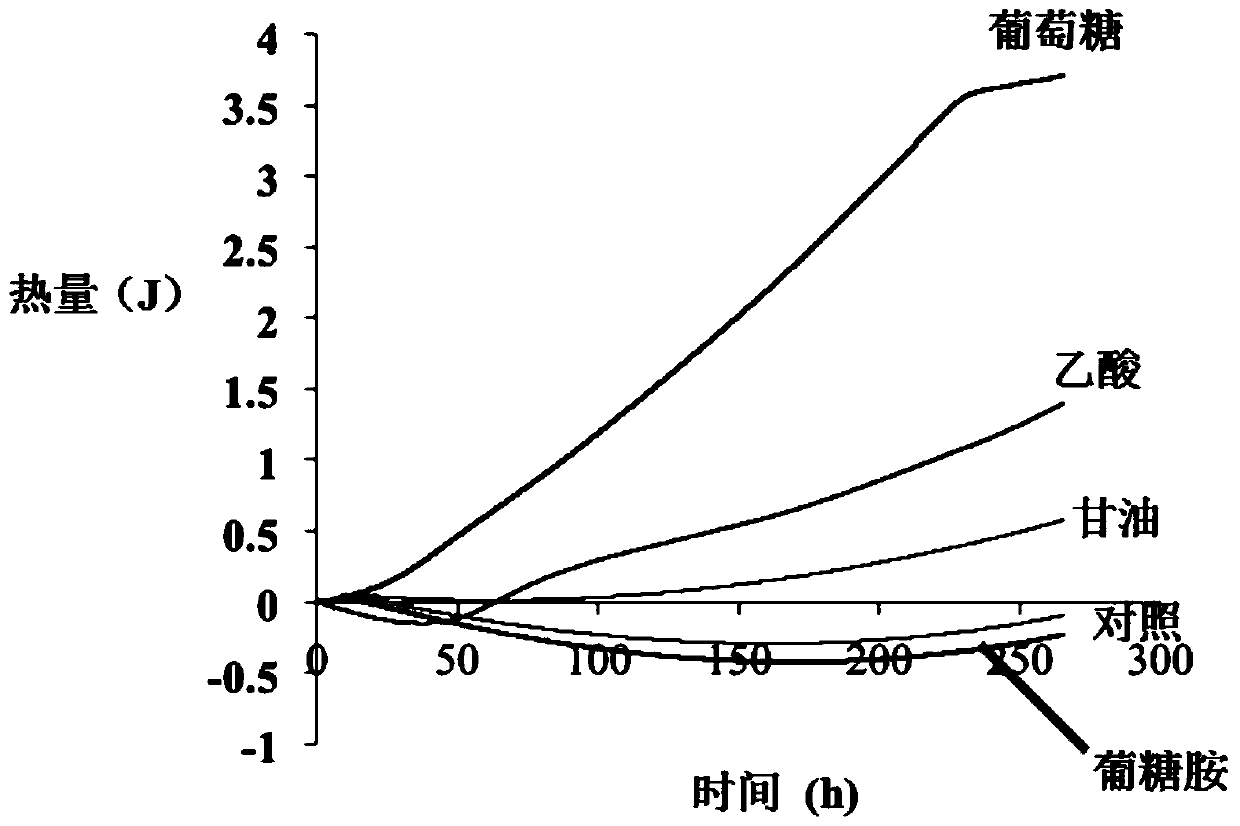Analytical methods for organic carbon bioactivity
A technology of biological activity and analysis method, applied in the field of molecular detection, can solve the problems of restricting the understanding of marine carbon pool and marine carbon storage, and the lack of quantitative analysis methods for organic carbon, etc., to achieve easy operation, high accuracy and good repeatability Effect
- Summary
- Abstract
- Description
- Claims
- Application Information
AI Technical Summary
Problems solved by technology
Method used
Image
Examples
Embodiment 1
[0024] The analysis of embodiment 1 amino acid bioactivity
[0025] 1.1 Preparation of microactivity calorimeter
[0026] Analysis of microbial metabolic activity was performed in a microactivity calorimeter. In this embodiment, the temperature is set at 28° C., and the instrument is stabilized for 1 to 2 hours.
[0027] 1.2 Preparation of organic carbon stock solution
[0028] Preparation of organic carbon stock solution: In this example, the biological activities of organic carbon L-glutamic acid, D-glutamic acid, L-valine and D-valine were analyzed. The concentration of the organic carbon stock solution was 10 mM, and the pH was adjusted to 7.0. The stock solution was sterilized by filtration through a 0.22 μm sterilized microporous membrane.
[0029] 1.3 Pre-cultivation of bacteria
[0030] The composition of medium M1 used in this example is 1L containing Bacto Peptone, 1.0g; yeast extract, 1.0g; KCl, 0.3g; MgSO 4 ·7H 2 O, 0.5g; CaCl 2 2H 2 O, 0.038g; NH 4 Cl, 0...
Embodiment 2
[0039] The analysis of the biological activity of embodiment 2 sugar, alcohol and organic acid
[0040] 2.1 Preparation of the microactivity calorimeter
[0041] After setting the temperature to the culture temperature of 28°C, stabilize the instrument for 1-2 hours.
[0042] 2.2 Preparation of organic carbon stock solution
[0043] Preparation of organic carbon stock solution: In this example, the biological activity of glucose, acetic acid, glycerol, and glucosamine on the marine bacterium Dinoroseobacter shibae DFL12 (DSM16493) was analyzed. The concentration of the organic carbon stock solution was 10%, and the pH was adjusted to 7.0. The stock solution was sterilized by filtration through a 0.22 μm sterilized microporous membrane.
[0044] 2.3 Pre-cultivation of bacteria
[0045] In this example, the composition of medium M1 is 1L containing Bacto Peptone, 1.0g; yeast extract, 1.0g; NaCl 20g, KCl 0.3g,, MgSO 4 ·7H 2 O 0.5g, CaCl 2 2H 2 O 0.05g, NH 4 Cl 0.3g, K 2...
Embodiment 3
[0054] The analysis of embodiment 3 sugar and amino acid biological activity
[0055] 3.1 Preparation of the microactivity calorimeter
[0056] Analysis of microbial metabolic activity was performed in a microactivity calorimeter. In this embodiment, the temperature is set at 28° C., and the instrument is stabilized for 1 to 2 hours.
[0057] 3.2 Preparation of organic carbon stock solution
[0058] In this example, the biological activities of organic carbon glucose, D-alanine, D-glutamic acid, D-methionine and D-leucine were analyzed. The organic carbon stock solution was 10 mM and the pH was adjusted to 7.0. The stock solution was sterilized by filtration through a 0.22 μm sterilized microporous membrane.
[0059] 3.3 Pre-cultivation of bacteria
[0060] In this example, the components (L) of medium M1 are: Bacto Peptone, 1.0g; yeast extract, 1.0g; KCl, 0.3g; MgSO 4 ·7H 2 O, 0.5g; CaCl 2 2H 2 O, 0.038g; NH 4 Cl, 0.3g; K2HPO4, 0.3g; and NaCl, 20.0g; 1mL trace eleme...
PUM
 Login to View More
Login to View More Abstract
Description
Claims
Application Information
 Login to View More
Login to View More - R&D Engineer
- R&D Manager
- IP Professional
- Industry Leading Data Capabilities
- Powerful AI technology
- Patent DNA Extraction
Browse by: Latest US Patents, China's latest patents, Technical Efficacy Thesaurus, Application Domain, Technology Topic, Popular Technical Reports.
© 2024 PatSnap. All rights reserved.Legal|Privacy policy|Modern Slavery Act Transparency Statement|Sitemap|About US| Contact US: help@patsnap.com










